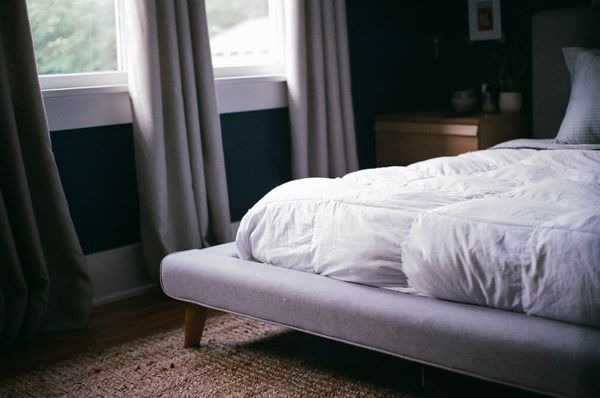
At a Glance:
Mattress Use & Maintenance Questions
Buying a New Mattress Questions
Where to Buy a Mattress Near Me
We spend about a third of our lives asleep, yet we rarely consider how our mattress might be impacting our sleep quality and, by extension, our waking hours. A lumpy mattress, an old spring that pokes you in the back, or a surface that's either too firm or too soft can turn what should be a restful night into a series of tossing and turning events. But here's the good news: The perfect mattress for you does exist, and it's closer than you think.
Choosing the right mattress can be a journey filled with queries about types, firmness, sizes, materials, and much more. Whether you're wondering how to select the perfect mattress for your sleep style, curious about the best options for specific health needs, or pondering the right time to replace your old mattress, we've got you covered. In this blog, we aim to answer all your common mattress questions, providing you with insightful, well-researched information to guide you in making an informed decision.
Explore Mattresses at Colder's
Find your next favorite mattress with help from our experts! Browse our mattresses, today!
Shop MattressesMattress Size Questions
Choosing the right mattress size is not just about fitting it into your bedroom; it's about finding the perfect fit for your comfort and lifestyle needs. In this section, we delve into the world of mattress sizes, answering your most pressing questions.
What is the Biggest Mattress Size?
The largest standard mattress size is the Alaskan King, measuring an impressive 108 inches by 108 inches. Other large mattress sizes include:
Wyoming King: 84 inches by 84 inches, slightly smaller than the Alaskan King but still larger than a standard King.
Texas King: 80 inches by 98 inches, which is narrower but longer than the Wyoming King, making it a good choice for taller individuals.
These oversized mattresses are less common and might require custom ordering from specific manufacturers. They also demand larger bedrooms and custom bedding to match their unique dimensions.
What Size is a King Size Mattress?
A standard king size mattress typically measures 76 inches in width and 80 inches in length.
How Wide is a Queen Mattress?
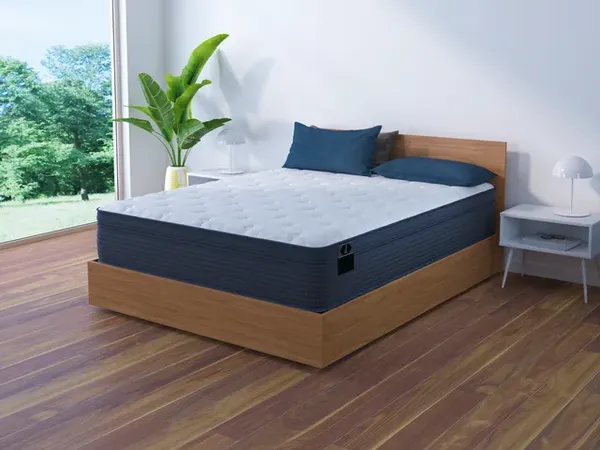
A standard queen size mattress is typically 60 inches wide.
How Long is a Queen Mattress?
A standard queen size mattress is usually 80 inches long. This length is sufficient for most adults, providing ample legroom.
How Much Does a Mattress Weigh?
The weight of a mattress can vary widely depending on its size, type, and materials. Here's a general breakdown by mattress type and size:
| Mattress Type / Size | Twin | Full | Queen | King |
|---|---|---|---|---|
| Innerspring Mattress | 40-60 lbs | 50-70 lbs | 70-100 lbs | 90-120 lbs |
| Memory Foam Mattress | 30-50 lbs | 50-60 lbs | 60-80 lbs | 70-100 lbs |
| Latex Mattress | 50-70 lbs | 60-80 lbs | 80-120 lbs | 120-160 lbs |
| Hybrid Mattress | 50-70 lbs | 70-90 lbs | 90-110 lbs | 100-150 lbs |
How Much Does a Queen Mattress Weigh?
On average, a queen mattress can weigh anywhere from 120 to 160 pounds. However, this range can differ based on the following factors:
⇨ Queen innerspring mattresses tend to be lighter, often weighing between 100 and 150 pounds.
⇨ Queen memory foam mattresses can vary but generally are in the range of 110 to 130 pounds.
⇨ Queen latex mattresses are usually on the heavier side, potentially reaching up to 150 pounds or more.
⇨ Queen hybrid mattresses can be quite heavy, sometimes exceeding 150 pounds.
⇨ On average, a queen wrapped coil mattress (also known as pocketed coil) can weigh anywhere from 100 to 150 pounds. The number and density of coils used in these mattress can influence the overall weight of these mattresses.
How Big is a Full Size Mattress?
A full size mattress, also known as a double mattress, typically measures 54 inches in width and 75 inches in length.
What Size is a Twin Mattress?
A standard twin size mattress typically measures 38 inches in width and 75 inches in length.

Mattress Type Questions
In this section, we delve into the diverse world of mattress types, helping you navigate through the myriad choices available.
What is an Innerspring Mattress?
An innerspring mattress is one of the traditional and most common types of mattresses, known for its support system made primarily of metal coils or springs. Innerspring mattresses are often recommended for people who prefer a firmer sleeping surface, need more substantial support, enjoy a mattress with bounce, or tend to sleep hot and need a cooler option. Here are key features and aspects of innerspring mattresses:
- Coil System: Coils provide the primary support structure, responding to body weight and movement. The number, type, and arrangement of these coils can vary. Common types of coil systems include Bonnell coils, pocketed coils, continuous coils, and offset coils.
- Firmness and Edge Support: Innerspring mattresses are available in a range of firmness levels, from soft to very firm. Many innerspring mattresses have reinforced edges to provide better edge support, allowing you to use the full surface of the mattress comfortably.
- Breathability: Due to their coil structure, innerspring mattresses typically offer good air circulation, which helps in maintaining a cooler sleeping surface compared to some foam mattresses that can retain heat.
- Bounce: Innerspring mattresses are known for their natural bounce, making them easier to move on and get off of, compared to some foam mattresses which may have more sink.
- Affordability: They come in various price ranges, often making them more affordable than some advanced memory foam or hybrid models.
What is a Hybrid Mattress?
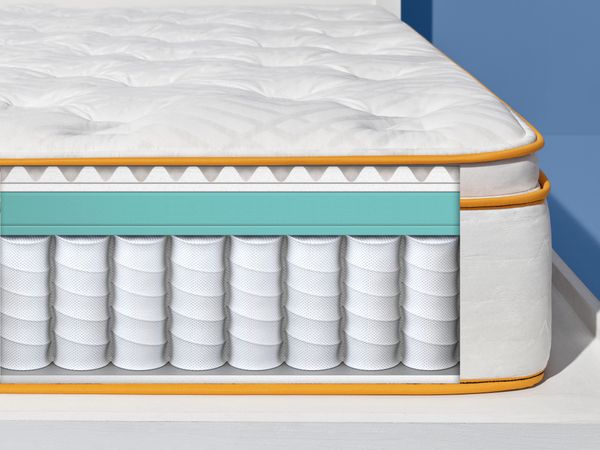
A hybrid mattress is a type of mattress that combines two or more different construction technologies, typically marrying the traditional innerspring system with layers of foam. They are a good option for those who like the feel of foam mattresses but need the extra support that coils provide. Here are key features of a hybrid mattress:
- Innerspring or Coil Core: The core of a hybrid mattress consists of a layer of innerspring coils, which provides the mattress with its foundational support and a certain degree of bounce.
- Foam Layers: On top of the coil system, hybrid mattresses have one or more layers of foam. These layers can include memory foam, latex, gel-infused foam, or other types of specialty foams. The foam layers are designed to contour to the body, providing pressure relief and enhancing comfort.
- Comfort and Support Balance: The coils provide a supportive base that helps maintain proper spinal alignment, while the foam layers conform to the body to relieve pressure points.
- Reduced Motion Transfer: Hybrid mattresses are often preferred by couples as they tend to isolate motion better than traditional innerspring mattresses. The pocketed coils move independently, which helps to minimize the transfer of movement from one side of the bed to the other.
- Temperature Regulation: The innerspring layer typically allows for better airflow compared to all-foam mattresses. This can help in keeping the mattress cooler. Some hybrids also incorporate cooling technologies in their foam layers, like gel-infused or copper-infused foam.
What is a Pillow Top Mattress?
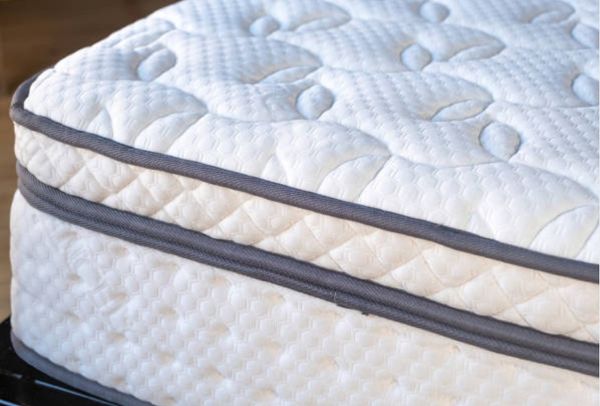
A pillow top mattress is a type of mattress that has an additional layer of padding or cushioning sewn on top of the mattress's main body. This extra layer, which looks like a pillow resting on the mattress, provides an added layer of plush comfort. Pillow top mattresses are often chosen for their immediate comfort and luxurious feel. They're a popular choice in hotels and resorts for this reason. Here are some key characteristics and considerations for pillow top mattresses:
- Construction: The pillow top is usually made of materials like memory foam, latex, cotton, wool, or down alternatives. This layer is permanently attached to the top of the mattress and can vary in thickness, often ranging from 2 to 4 inches.
- Support: While the pillow top adds comfort, the overall support of the mattress is still determined by its core, which could be innerspring, foam, or hybrid. The pillow top does not necessarily change the support level but adds a layer of comfort on top of it.
- Durability: Pillow top mattresses can sometimes have a shorter lifespan than their non-pillow top counterparts. The additional layer can compress over time, leading to indentations or sagging where the sleeper typically lies.
- Heat Retention: Depending on the material, pillow tops can retain heat. For instance, memory foam pillow tops may hold more body heat compared to natural fibers like cotton or wool.
What is a Euro Top Mattress?
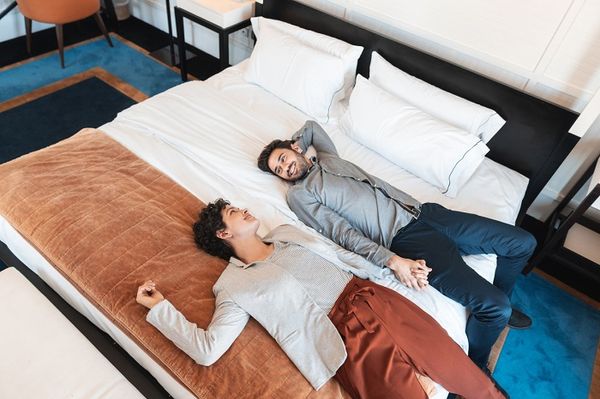
A Euro top mattress is a type of mattress that features an extra layer of padding or cushioning sewn to the top of the mattress. This layer is similar to a pillow top, but with a key difference in design and appearance. Here are the main characteristics of a Euro top mattress:
- Seamless Integration: Unlike a pillow top, which is sewn on top of the mattress with a visible gap or indent between the pillow and the mattress, the Euro top layer is sewn flush with the edges of the mattress. This creates a more uniform and streamlined appearance.
- Padding Material: The Euro top can be filled with a variety of materials such as foam, fiberfill, wool, or cotton. The type of material used influences the firmness, comfort, and breathability of the mattress.
- Comfort and Support: Euro tops tend to be denser and made of firmer materials compared to pillow tops, which can offer better edge support and a more consistent sleeping surface.
- Durability: The Euro top is less likely to shift or lose shape compared to a pillow top because it is stitched directly to the mattress. This can contribute to a longer lifespan for the mattress and more consistent comfort over time.
- Heat Retention: Like pillow tops, the heat retention of a Euro top mattress depends on the materials used. For instance, memory foam may retain more body heat than natural fibers.
What is a Plush Mattress?
A plush mattress refers to a type of mattress that offers a softer feel and is designed for comfort and a luxurious sleeping experience. Considerations for plush mattresses:
- Materials: Plush mattresses often use materials like memory foam, gel-infused foam, softer latex, or additional layers of cushioning fibers to create the plush feel. These materials conform to the body's shape, providing relief to pressure points and a sensation of being cradled.
- Support: Despite being soft, a good plush mattress still provides adequate support. The core of the mattress, which could be made of innerspring, foam, or hybrid materials, is designed to support proper spinal alignment while the softer top layers offer comfort.
- Ideal for Certain Sleepers: Plush mattresses are often preferred by side sleepers and those with certain pain conditions, as the extra cushioning helps reduce pressure on the hips and shoulders. They are also a good choice for lighter-weight individuals who may not sink into firmer mattresses enough to feel comfortable.
- Temperature Regulation: Depending on the materials used, some plush mattresses can retain more body heat. For instance, traditional memory foam tends to hold heat, whereas gel-infused or open-cell foams are designed to be more breathable.
- Durability and Maintenance: Plush mattresses may require more maintenance as they can be prone to sagging over time, especially if they are not rotated regularly. The lifespan of the mattress can vary depending on the quality of materials and construction.
- Variations: The term "plush" can vary in meaning between manufacturers. Some may offer "plush firm" or "luxury plush" options. Similar to firm mattresses, plushness can also vary by degrees with ultra plush mattresses being the softest comfort level available.
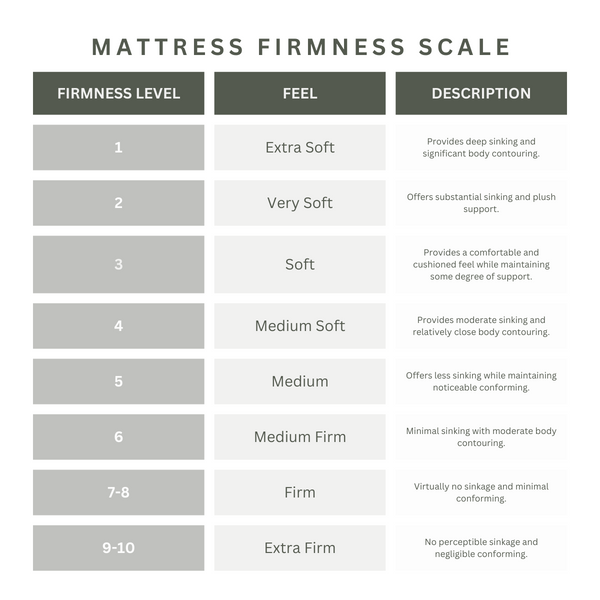
What is a Split King Mattress?
A split king mattress is a type of bed setup that essentially combines two Twin XL mattresses to create the dimensions of a standard king-size bed. This configuration offers unique benefits, especially for couples with differing sleep preferences. Key features and aspects to consider:
- Individual Comfort: The primary advantage of a split king mattress is that it allows each person to choose a mattress that suits their individual comfort preferences, whether it's in terms of firmness, material, or other specific needs like temperature regulation.
- Adjustable Bed Compatibility: Split king mattresses are particularly popular with adjustable bed frames. Each side can be adjusted independently, allowing one person to sit up or elevate their legs without disturbing the other.
- Minimized Motion Transfer: Because the split king is essentially two separate mattresses, it significantly reduces motion transfer. This means that movements from one side of the bed (like turning over or getting up) are less likely to be felt on the other side.
- Ease of Movement: Split king mattresses can be easier to move and handle compared to a single king mattress, especially in tight spaces or when navigating stairs and narrow hallways.
- Bedding Considerations: While split king mattresses use standard king-size bed sheets for the overall bed, each individual mattress requires its own Twin XL fitted sheet. Split king adjustable beds may also require special bedding that accommodates the independent movement of each side.
- Gap Between Mattresses: One potential drawback is the gap that exists between the two mattresses. Some couples might find this separation uncomfortable, especially if they are accustomed to sharing a single mattress.
What is a Mattress in a Box?
A "mattress in a box" refers to a mattress that has been compressed, vacuum-sealed, and rolled into a compact box for easy shipping and handling. This innovative packaging and delivery method has become increasingly popular, especially for online mattress shopping. Here are some key aspects of a mattress in a box:
- Convenience in Shipping and Handling: One of the primary benefits of a mattress in a box is the convenience it offers. The compact packaging makes it easier to ship and handle, allowing it to be delivered right to your doorstep. This is a significant advantage over traditional mattress delivery, which often requires scheduling and can be cumbersome.
- Easy Setup: The mattress can be easily unboxed and set up by the customer. Once taken out of the box and unwrapped, the mattress expands to its full size. This process can take a few hours to a couple of days, depending on the mattress type and brand.
- Cost-Effective: Despite the innovative packaging, mattresses in a box are designed to offer the same quality and comfort as traditional mattresses. These mattresses can be more affordable compared to other mattress types
What is a Mattress Foundation?
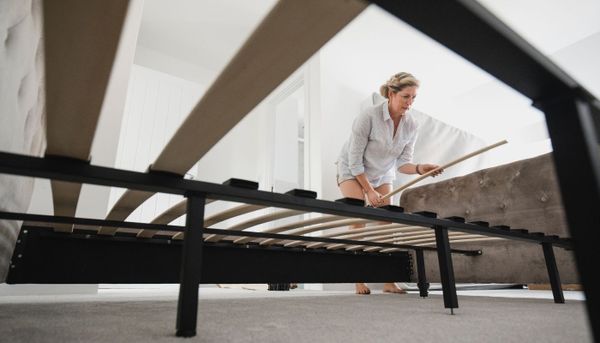
A mattress foundation, also known as a bed base, is an essential component of a bed that supports the mattress. It's designed to provide a stable and flat surface, which helps to prolong the life of the mattress by evenly distributing weight and preventing sagging. Here are some benefits of mattress foundations:
- Support and Durability: Foundations provide a stable base for mattresses, which is critical for maintaining the integrity and longevity of the mattress. They ensure that the mattress remains flat and supported, reducing the risk of sagging or wear.
- Compatibility with Mattress Type: It’s important to match the foundation to the type of mattress you have. For example, memory foam and latex mattresses generally require a solid or closely slatted base for optimal support, whereas innerspring mattresses can work well with box springs.
- Height and Storage: Foundations also contribute to the overall height of the bed. Some people prefer a higher bed for ease of getting in and out, while others may opt for a lower profile for aesthetic reasons. Certain types of foundations, like platform beds, can also offer additional storage space underneath.
- Aerating the Mattress: By elevating the mattress off the floor, foundations help in air circulation around the mattress, which is important for temperature regulation and preventing moisture buildup.
- Aesthetic Considerations: The design of the foundation can affect the overall look of the bed. Some foundations are designed to be used with a bed frame or headboard, while others can stand alone.
- Standard Box Spring: This is a traditional type of mattress foundation, typically made of a wooden frame with metal coils or springs. It's designed to absorb shock and add support to the mattress, enhancing its lifespan. Standard foundations usually measure around 9 inches in height, providing a significant lift to the bed.
- Low Profile Foundation or Box Spring: A low profile foundation offers the same support as a standard box spring but with less height, usually between 4 to 6 inches. This type is ideal for those who prefer a lower bed height or have a thicker mattress and don't want the bed to be too tall. It's also popular for aesthetic reasons, as it gives the bed a more streamlined, modern look.
- Adjustable Base: These bases allow you to adjust the position of your mattress, raising the head or foot of the bed. They are compatible with most foam and hybrid mattresses.
Are Box Springs Necessary Under a Mattress
We’ve seen this scenario play out a thousand times: you’re in the process of purchasing a new mattress. You’ve chosen the perfect mattress, you’re ready to check out, when the sales associate inquires as to whether or not you need a foundation or box spring to go with your new mattress? Buying a mattress can be expensive enough, without the added cost of a foundation. Which begs the question: "does a mattress need a box spring?"
While not strictly necessary, there are quite a few benefits to pairing a mattress with a box spring. It's important to understand that the necessity of a box spring largely depends on the type of mattress and the bed frame you're using.
- Traditionally, innerspring mattresses were often used with box springs. The box spring provided additional support and helped absorb shock, extending the life of the mattress.
- Foam, latex, and hybrid mattresses do not usually require a box spring. They perform better on a solid or slatted foundation that offers a flat, stable surface.
- Platform Beds: These do not require a box spring. They already have a solid or slatted base designed to support the mattress.
- Traditional Bed Frames: If you have a traditional metal bed frame, a box spring is usually necessary to provide a flat, stable surface for the mattress and to bring it up to a comfortable height. li>Adjustable Bases: These bases are designed to replace box springs and provide support for specially designed mattresses.
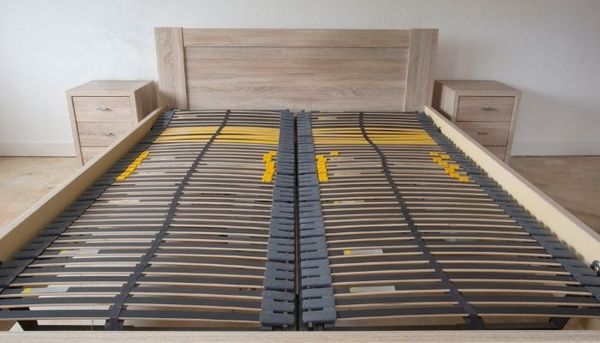
Mattress Use & Maintenance Questions
Next, we dive into the vital aspects of mattress use and maintenance. From understanding the importance of regular cleaning to learning the right way to rotate or flip your mattress, we cover all the essential tips and tricks.
How to Make a Mattress Firmer
A plush or ultra-plush mattress isn’t right for every body or sleep style. If you find your mattress too soft and are looking for ways to make it firmer, there are several strategies you can try. Here's how to increase the firmness of your mattress:
- Use a Firm Mattress Topper: Adding a firm mattress topper is one of the easiest ways to change the feel of your bed. Look for toppers made from materials like firm foam, latex, or extra-firm fibers.
- Use a Firm Mattress Pad: A firm mattress pad can add an extra layer of firmness, although it's usually not as effective as a topper.
- Place Plywood or MDF Board Under the Mattress: Placing a solid board between the mattress and the bed frame can provide additional support and reduce sagging, thereby increasing firmness. Make sure the board is cut to match the size of your mattress for an even surface.
- Adjust the Room Temperature: If you have a memory foam mattress, be aware that they tend to soften in warmer temperatures. Lowering the room temperature can help the foam remain firmer.
- Flip or Rotate the Mattress: If your mattress is double-sided and flippable, turning it over can provide a firmer surface, especially if one side has been used more than the other. Rotating the mattress (180 degrees) regularly can also help in maintaining even wear.
- Check and Upgrade Your Bed Foundation: Ensure your bed frame or foundation is providing adequate support. A worn-out box spring or a slatted frame with too much space between slats can make a mattress feel softer. Consider upgrading to a more supportive foundation.
- Keep the Mattress Dry: Moisture can soften materials in the mattress. Make sure your mattress is protected from humidity and dampness.
- Consider the Mattress Age: If your mattress is old and sagging, these solutions may offer only temporary relief. In such cases, it might be time to invest in a new mattress.
Before making any changes, it's a good idea to check the warranty of your mattress, as some actions (like adding plywood or flipping a one-sided mattress) might void the warranty.
Do You Need a Mattress Protector?
Using a mattress protector is highly recommended, as it offers several important benefits that extend the life and maintain the quality of your mattress:
✓ Protection Against Spills and Stains: Mattress protectors provide a barrier against spills and accidents, which is especially useful for families with children or pets. This can be crucial for maintaining the warranty, as many mattress warranties are voided by stains.
✓ Prevents Dust Mite Allergies: Dust mites are common allergens that can accumulate in mattresses. A mattress protector keeps these allergens at bay, creating a healthier sleep environment, especially important for those with allergies or asthma.
✓ Protection Against Bed Bugs: Some mattress protectors are designed to prevent bed bugs, which can be difficult to eliminate once they infest a mattress.
✓ Prevents Wear and Tear: Regular use can cause wear and tear on a mattress. A protector can minimize the direct contact and friction, thereby extending the mattress's life.
✓ Hygiene and Cleanliness: Mattress protectors make it easier to keep your sleep environment clean. They can be easily removed and washed, maintaining a fresh and hygienic bed.
✓ Moisture Management: For those who sweat during the night, a breathable, moisture-wicking mattress protector can help keep the sleep surface dry and comfortable.
How Often Should You Flip Your Mattress?
The frequency of flipping your mattress depends on the type of mattress you have and the manufacturer's recommendations. If you have an older mattress that is double-sided and flippable, regular flipping can extend its life and maintain comfort. Here's a general guideline:
⇨ Traditional innerspring mattresses should ideally be flipped and rotated every three to six months. This helps in even wear and tear and prolongs the mattress's lifespan.
⇨ Many modern memory foam mattresses are designed with a specific top and bottom, meaning they should not be flipped. However, rotating them 180 degrees every six months can help prevent uneven wear.
⇨ Like memory foam mattresses, hybrid mattresses usually have a designated top and bottom. They should not be flipped but can be rotated every six months.
Can You Flip a Pillow Top Mattress?
No, you cannot flip a pillow top mattress. Pillow top mattresses are designed with a specific top and bottom – the pillow layer is only on one side. Flipping it over would mean sleeping on the non-cushioned, firmer underside, which is not intended for that purpose and would not provide the comfort or support the mattress is designed for.
How Often to Rotate a Mattress?
The frequency of rotating your mattress largely depends on the type of mattress you have and the manufacturer's recommendations. Regular rotation helps to distribute wear more evenly, which can improve comfort and extend the life of your mattress. Remember, rotation means turning the mattress 180 degrees, not flipping it over. However, as a general guideline:
⇨ Rotate your new mattress approximately every three to six months. This is especially important within the first couple of years of use, as it helps ensure even wear.
⇨ If you own an older mattress, especially an innerspring one without a pillow top or specialized layers, rotating it every six months can help prolong its lifespan.

How to Keep a Mattress from Sliding Around?
To prevent your mattress from sliding, you can try several methods.
- Non-Slip Mattress Pads: Place a non-slip pad (often rubberized) between your mattress and the bed frame or box spring. These pads create friction, which keeps the mattress in place.
- Rubber Matting: Similar to non-slip pads, rubber matting (like the kind used under area rugs) can be effective. Cut it to size and place it between the mattress and the foundation.
- Velcro Strips: Attaching Velcro strips to the mattress and the bed frame can be a secure way to keep the mattress from moving. Make sure to use the industrial-strength Velcro for a firm hold.
- Double-Sided Carpet Tape: This tape can be used on the bottom of the mattress, sticking it to the bed base. However, be cautious as it may leave a residue on the mattress and the bed frame.
- Check Bed Frame and Box Spring: Sometimes, a worn-out box spring or a bed frame that’s too large can cause a mattress to move around. Ensure that your bed frame and box spring are in good condition and appropriately sized for your mattress.
- Bed Frame with a Lip or Rails: Consider a bed frame that has a lip or side rails to hold the mattress in place. This is a more permanent solution and can be very effective.
- Mattress Extender or Gap Filler: If your mattress is sliding due to a gap, using a mattress extender or gap filler can provide stability.
- Sheet Straps or Elastic Bands: Some people use sheet straps or elastic bands that go under the mattress, holding it to the bed frame or box spring.
- Rethink Your Mattress Skirt: If you’re using a bed skirt, ensure it’s not causing the mattress to slide. Sometimes tucking it in more securely or removing it can help.
How to Fix a Sagging Mattress
Fixing a sagging mattress can help extend its life and improve your sleep quality.
- Rotate or Flip the Mattress: Regularly rotating your mattress can help even out wear and tear. If your mattress is double-sided, flipping it over can also help. Do this every three to six months.
- Use a Mattress Topper: A mattress topper can't fix the sagging but can provide an even surface to sleep on. Choose a firm mattress topper for the best results.
- Check and Repair the Bed Frame or Box Spring: Sometimes the mattress sags because the bed frame or box spring is broken or worn out. Inspect them for any damage and repair or replace if necessary.
- Use Plywood or MDF Board: Placing a piece of plywood or MDF (Medium Density Fiberboard) between the mattress and the box spring can provide additional support and help reduce sagging in certain areas.
- Mattress Helper or Sagging Mattress Support: There are products specifically designed to help with sagging mattresses, like mattress helpers or under-mattress supports. These can be inserted between the mattress and box spring to give extra support where needed.
- Regular Maintenance: Regularly rotating or flipping and keeping your mattress clean can prevent or slow down sagging.
Remember, these are temporary fixes. A sagging mattress often indicates wear and tear that can't be fully corrected, impacting sleep quality and comfort. If your mattress is significantly sagging, it may be time to consider replacing it.
How to Store a Mattress When You’re Not Using It
Storing a mattress properly is important to maintain its shape, prevent damage, and ensure it remains clean and hygienic.
- Use a Mattress Cover: Invest in a breathable, plastic mattress cover to protect it from dust, moisture, and pests. Make sure the cover is tightly sealed.
- Avoid Folding the Mattress: If possible, store the mattress flat. Folding or bending can damage the internal structure, especially for innerspring and hybrid mattresses. Memory foam mattresses are more flexible but should still be stored flat if possible.
- Elevate the Mattress: Place the mattress on a flat surface, preferably off the ground. This prevents moisture from accumulating underneath and keeps the mattress away from potential pests.
- Avoid Storing Items on Top: Do not place heavy items on top of the mattress. This can cause permanent indentations and damage the internal structure.
- Climate Control: Store the mattress in a climate-controlled environment. Extreme temperatures and humidity can damage the materials and encourage the growth of mold and mildew. Don't store your mattress in damp locations like basements or garages, as these areas can promote mold and mildew growth.
- Rotate the Mattress: If you’re storing it for a long time, consider rotating the mattress every few months to prevent any potential sagging or compression in one area.
How to Move a Mattress by Yourself
Moving a mattress by yourself can be challenging, especially if it's large or heavy. However, with the right approach and tools, it can be done safely and effectively.
- Gather Supplies: Get a mattress bag to protect your mattress from dirt, moisture, and damage. You'll also need packing tape to seal the bag, and potentially moving straps or a dolly to help with lifting and transportation.
- Prepare the Mattress: Strip the mattress of all bedding and cover it with the mattress bag. Seal the bag with packing tape to keep it secure.
- Clear a Path: Make sure the path from your bedroom to the moving vehicle is clear. Remove any obstacles or tripping hazards. Open all doors along the way.
- Lifting the Mattress: Bend your knees and lift with your legs, not your back, to avoid injury. If the mattress is flexible (like a memory foam mattress), you might be able to fold it. For innerspring or hybrid mattresses, keep it as flat as possible.
- Use Moving Straps or a Dolly: Moving straps can help distribute the weight more evenly and make lifting easier. If you have a dolly, place the mattress vertically onto it for easier transportation.
- Carrying the Mattress: If you have to navigate stairs, be cautious and take it slow. If the mattress is very bulky, it might be easier to drag it, but only if it's well-protected by the mattress bag.
- Loading into a Vehicle: The easiest way to transport a mattress is with a large enough vehicle, like a van or truck. Tilt the mattress as needed to fit it through the vehicle door, then lay it flat or against the side of the vehicle's interior.
- Secure the Mattress: If you're using a pickup truck, secure the mattress with ropes or straps to prevent it from shifting or flying out during transport.
- Drive Carefully: Take corners and bumps slowly to avoid shifting the mattress during transit.
- Unloading and Setup: Use the same caution when unloading and setting up the mattress in its new location.

Can You Sleep on a Mattress While it’s Expanding?
Yes, you can sleep on a new mattress while it's expanding, but it's often recommended to wait if possible. Here’s why:
- Time to Expand: Most mattresses, especially those made of memory foam, need time to fully expand after being unpacked. This can take anywhere from a few hours to 72 hours, depending on the mattress type and brand. Sleeping on it too soon might affect its ability to expand to its full and proper shape.
- Support: A mattress that hasn't fully expanded may not provide the intended level of comfort and support. Waiting for it to expand fully ensures you experience the mattress as designed.
- Off-Gassing: New mattresses, particularly foam ones, often release off-gassing odors when first unpacked. These odors are typically not harmful, but they can be unpleasant. Allowing the mattress to air out during the expansion period can reduce these odors.
Mattress Cleaning Questions
Knowing how to properly maintain and clean your mattress can often be a source of uncertainty. In this section, we explore the essentials of mattress cleaning.
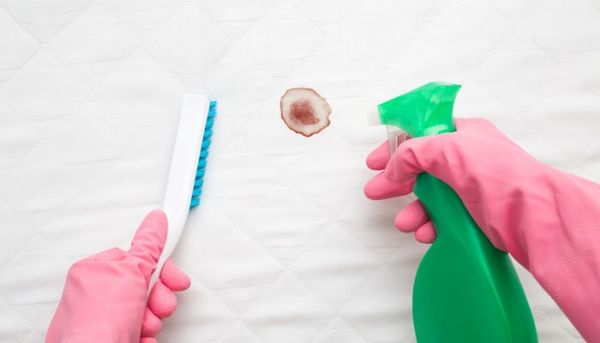
How to Clean a Mattress
Cleaning a mattress is an important part of maintaining bedroom hygiene and can help extend the life of the mattress. Here's a step-by-step guide on how to clean a mattress:
- Strip the Bed: Remove all sheets, pillows, mattress covers, and any other bedding.
- Vacuum the Mattress: Use the upholstery attachment on your vacuum cleaner to thoroughly vacuum the surface and sides of the mattress. This removes dust, dead skin cells, and other debris.
- Spot Clean Stains: Use a mild detergent or a mixture of baking soda, salt, and water to gently spot clean any stains. Apply the cleaner with a damp cloth, being careful not to soak the mattress. For tougher stains, you can use an enzyme cleaner or a solution specifically designed for the type of stain (blood, urine, sweat, etc.).
- Deodorize with Baking Soda: Sprinkle a thin layer of baking soda over the entire surface of the mattress. Let it sit for several hours or even overnight. Baking soda helps to neutralize odors and absorb moisture.
- Vacuum Again: After the baking soda has sat for a few hours, vacuum it up. Make sure to thoroughly remove all the baking soda.
- Air Out the Mattress: If possible, let your mattress air out by placing it in a well-ventilated area or near an open window. This helps to dissipate any lingering odors and allows any remaining moisture to evaporate.
- Flip and Repeat (If Double-Sided): If your mattress is double-sided and can be flipped, repeat the cleaning process on the other side.
Even if it doesn't appear dirty, regular cleaning (every six months or so) is a good practice to maintain mattress hygiene. Avoid using harsh chemicals, as they can damage the mattress materials and potentially be harmful to your health. Always check the manufacturer’s care instructions, as some mattresses may have specific cleaning requirements or prohibitions. If the mattress is heavily soiled or you're dealing with difficult issues like deep stains or bed bugs, it might be best to consult a professional cleaning service.
Can You Use a Carpet Cleaner on a Mattress?
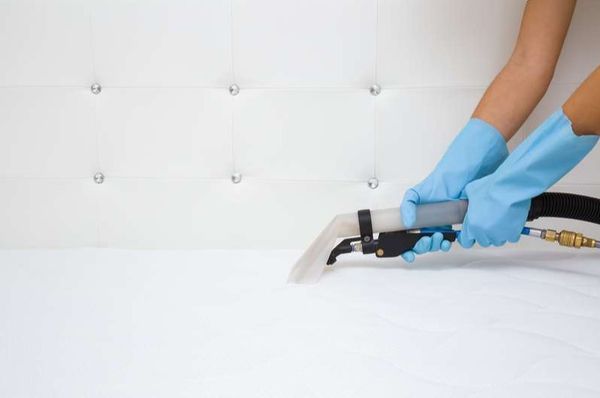
Using a carpet cleaner on a mattress is generally not recommended. Carpet cleaners, especially those with a wet cleaning or shampooing function, can introduce too much moisture into the mattress, which can lead to issues like mold and mildew growth, especially since mattresses don't dry as quickly or as thoroughly as carpets.
However, if you have a carpet cleaner with an upholstery attachment and you decide to use it, here are some precautions to keep in mind:
- Use as Little Moisture as Possible: If the cleaner has a setting for light moisture, use that. The goal is to make the mattress damp, not wet.
- Test a Small Area First: Before cleaning the entire mattress, test the cleaner on a small, inconspicuous area to ensure it doesn't damage the fabric or cause discoloration.
- Thorough Drying: Ensure the mattress is completely dry before using it again. This might take a considerable amount of time, and the mattress should be placed in a well-ventilated area, preferably with fans or a dehumidifier.
- Spot Cleaning is Preferable: Instead of using a carpet cleaner, spot cleaning stains with a mild detergent and a damp cloth is generally safer and more appropriate for a mattress.
How to Get Stains Out of a Mattress
Removing stains from a mattress can be done with household items and a bit of elbow grease. Here's how to tackle different types of common stains:
General Stain Removal:
- Mix a solution of equal parts cold water and distilled white vinegar. Add a small amount of laundry detergent for extra cleaning power.
- Dip a clean cloth into the solution and lightly dab the stain. Don't saturate the mattress.
- Blot the area with a dry towel to absorb the liquid.
- Sprinkle baking soda over the area to absorb any remaining moisture and neutralize odors. Let it sit for several hours before vacuuming it off.
- Always blot stains rather than rubbing them, as rubbing can spread the stain.
- Use cold water for blood and protein-based stains.
- Ensure the mattress is completely dry before remaking the bed, as moisture inside a mattress can lead to mold and mildew.
- For persistent or difficult stains, consider using an enzyme cleaner, which can break down protein-based stains without damaging the mattress material.
- If you're unsure about a cleaning solution, test it on a small, inconspicuous area of the mattress first.
How to Get Pee Out of a Mattress
Removing pee from a mattress can be a bit challenging, but with prompt action and the right steps, it's manageable.
- Blot the Area: Quickly blot up as much urine as possible using clean, dry towels or paper towels. Press firmly but avoid rubbing to prevent spreading the urine deeper into the mattress.
- Prepare a Cleaning Solution: Mix a solution of 50% white vinegar and 50% water. Vinegar is effective at neutralizing the urine odor. For an added cleaning boost, you can add a couple of drops of mild dish soap.
- Apply the Solution: Lightly spray or dab the solution onto the stained area. Do not oversaturate the mattress as excessive moisture can lead to mold growth.
- Let it Sit: Allow the solution to sit for 10-15 minutes to break down the urine and neutralize the odor.
- Blot Again: Use a clean, dry towel to blot the area again, removing as much of the cleaning solution as possible.
- Apply Baking Soda:Sprinkle a generous amount of baking soda over the entire area to absorb any remaining moisture and odor. Baking soda is highly effective at absorbing and neutralizing odors.
- Let the Baking Soda Sit: Allow the baking soda to sit on the mattress for several hours or, if possible, overnight. This gives it ample time to absorb the odor and any residual moisture.
- Vacuum the Mattress: Thoroughly vacuum the area to remove the baking soda along with any dried residue. Use the upholstery attachment of your vacuum cleaner for the best results.
- Air Out the Mattress: If possible, let the mattress air out for a few hours in a well-ventilated room or in direct sunlight. Sunlight can also help in breaking down any remaining odors.
How to Get Urine Out of a Memory Foam Mattress?
Removing urine from a memory foam mattress requires prompt and careful cleaning, as memory foam is particularly absorbent.
- Blot the Area: If the urine is fresh, use a clean, dry towel or paper towels to blot as much of the liquid as possible. Press down firmly but do not rub, as this can spread the urine deeper into the foam.
- Apply Vinegar Solution: Mix a solution of 50% white vinegar and 50% water. Vinegar is effective at breaking down the urine and neutralizing the odor. Spray or gently apply the solution to the stained area without soaking the mattress. Let it sit for 10-15 minutes.
- Blot Again: After the solution has had time to work, blot the area again with a clean, dry towel to absorb the vinegar and urine mixture.
- Apply Baking Soda: Sprinkle a generous amount of baking soda over the entire area where the urine was. Baking soda is excellent for absorbing odors and pulling out moisture. Let it sit for several hours or ideally overnight.
- Vacuum the Mattress: Once the baking soda has sat for several hours, vacuum it off the mattress using the upholstery attachment. Ensure all baking soda residue is removed.
- Optional Enzyme Cleaner: For particularly stubborn stains or odors, you might consider using an enzyme-based cleaner. These are specifically designed to break down proteins in biological stains like urine. Follow the instructions on the product label.
- Air Dry the Mattress: Allow the mattress to air dry completely. This is crucial, as memory foam can trap moisture. You can use a fan or place the mattress in a well-ventilated area to speed up the drying process.
- Repeat if Necessary: If the stain or odor persists, repeat the process. Sometimes, particularly strong odors or older stains may need a couple of treatments.
For future prevention, consider using a waterproof mattress protector, which can protect your memory foam mattress from accidents and spills.
How to Get Cat Pee Out of a Mattress
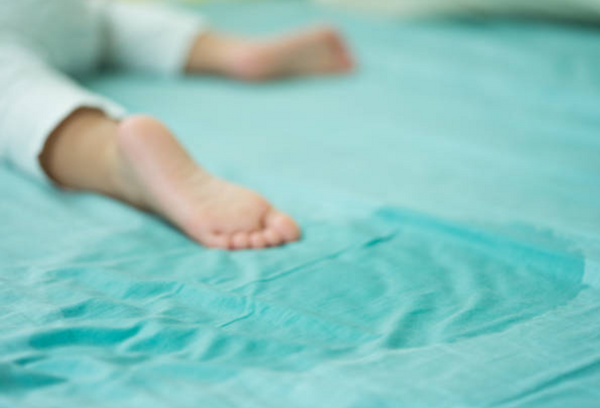
Removing cat urine from a mattress can be challenging due to its strong odor and the potential for deep penetration into the mattress material. However, with prompt and thorough cleaning, you can effectively remove both the stain and odor.
- Blot the Urine: If the cat urine is fresh, blot as much of it as possible with clean towels or paper towels. Press firmly but do not rub, as this can spread the urine deeper into the mattress.
- Apply Vinegar Solution: Mix a solution of 50% white vinegar and 50% water. Vinegar helps to neutralize the ammonia in cat urine and break down the odor. Spray or gently apply the solution to the stained area, making sure not to oversaturate the mattress. Let it sit for 10-15 minutes.
- Blot Again: Use a clean, dry towel to blot the vinegar solution from the mattress.
- Apply Baking Soda: After blotting, sprinkle a generous amount of baking soda over the affected area. Baking soda is effective at absorbing odors and any residual moisture.
- Let It Sit: If using baking soda, let it sit on the mattress for several hours or ideally overnight. If you used an enzyme cleaner, allow it to dry as per the product's instructions.
- Vacuum the Mattress: Vacuum the entire mattress thoroughly to remove all the baking soda or any residue from the cleaning process.
- Air Dry: Allow the mattress to air dry completely. Use a fan or place the mattress in a well-ventilated area to help speed up the drying process.
How to Clean Vomit from a Mattress
Cleaning vomit from a mattress requires prompt action to prevent stains and odors from setting in.
- Remove Solids: Start by removing any solid matter. Use a disposable paper towel or a spoon, and be gentle to avoid pushing the vomit deeper into the mattress.
- Blot the Area: Blot the soiled area with paper towels to absorb as much liquid as possible. Do not rub, as this can spread the stain.
- Clean with a Mild Detergent: Mix a solution of warm water and mild detergent or dish soap. Using a clean cloth, apply the solution to the area, dabbing gently. You can also use a spray bottle to apply the solution.
- Rinse with Cold Water: After cleaning, dab the area with a clean, damp cloth using cold water to rinse out any soap residue.
- Apply Baking Soda: Sprinkle a generous amount of baking soda over the area. Baking soda is excellent for absorbing odors and any residual moisture.
- Leave to Sit: Allow the baking soda to sit on the mattress for several hours or overnight.
- Vacuum the Mattress: Once the baking soda has done its job, vacuum it off the mattress using the upholstery attachment.
- Use Enzyme Cleaner: For tough stains or persistent odors, you can use an enzyme-based cleaner. These are particularly effective at breaking down organic matter and odors. Follow the instructions on the cleaner.
- Air Out the Mattress: Let the mattress air dry completely. If possible, place it near an open window or use a fan to speed up the drying process.
- Sanitize: If you want to ensure the area is sanitized, you can use a disinfectant spray that’s safe for fabrics. Test it on a small area first to ensure it won’t damage the mattress.
How to Get Sweat Stains Out of a Mattress
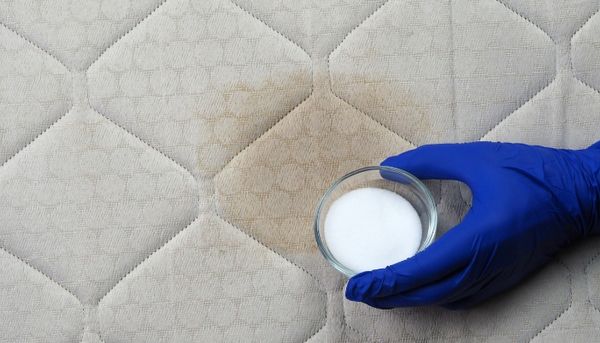
Create a mixture of dish soap and water, or use a small amount of laundry detergent diluted in water. Apply the solution to the stain and gently scrub with a soft brush or cloth. Rinse by dabbing the area with a damp cloth and blot dry.
Is There a Mattress Cover That Kills Bed Bugs?
Yes, there are mattress covers specifically designed to protect against bed bugs. These are often referred to as bed bug mattress encasements or bed bug mattress protectors. They are designed to completely encase the mattress (and sometimes the box spring).
- Complete Encasement: The cover encases the entire mattress with a zipper closure. Good quality encasements have zipper locks to ensure that bed bugs cannot enter or escape.
- Durable Material: These covers are usually made from strong, tear-resistant materials that bed bugs cannot penetrate or chew through.
- Tight Weave Fabric: The fabric of the encasement typically has a very tight weave that prevents bed bugs from getting through.
- Bed Bug Proof Zipper: The zipper is designed to have no gaps or spaces where bed bugs could slip through. Often, the end of the zipper is sealed with a zipper lock.
- Ease of Inspection: The covers are often light-colored and smooth, making it easier to spot and identify any bed bugs.
- Allergy Protection: Many of these covers also offer protection against dust mites and other allergens, which can be beneficial for people with allergies.
For best results, use the bed bug mattress cover in conjunction with professional pest control methods. Also, inspect the cover regularly for any rips or tears and replace it if necessary.
Can You Wash Bed Bug Mattress Covers?
Yes, bed bug mattress covers can be washed, but it's important to follow specific guidelines to maintain their effectiveness.
- Check Manufacturer's Instructions: Always start by checking the care label or manufacturer’s instructions for your specific mattress cover. Different materials may have different care requirements.
- Washing Machine Settings: Most bed bug mattress covers can be washed in a washing machine. Use a gentle cycle with warm water. Hot water can be used for fabrics that can tolerate higher temperatures, as it can help kill any remaining bugs or eggs.
- Mild Detergent: Use a mild detergent. Avoid using bleach or fabric softeners, as they can damage the fabric and reduce the effectiveness of the cover.
- Air Dry When Possible: It's often recommended to air dry bed bug covers. If you use a dryer, use a low or no-heat setting. High heat might damage the cover, especially if it has a special zipper or is made of a material that can shrink or melt.
- Inspect Regularly: After washing and drying, inspect the cover for any damage, especially around the seams and zipper. Even small tears or holes can render the cover ineffective against bed bugs.
Remember, while washing the cover is good for hygiene, it’s not a method for eliminating an existing bed bug infestation in your home. Professional pest control measures may be necessary in case of an infestation. The primary function of a bed bug mattress cover is to trap bugs inside and prevent new ones from entering the mattress.
What Can I Spray on a Mattress to Kill Fleas?
To deal with fleas on a mattress, you need a solution that's effective against the fleas but also safe for use in an area where you sleep.
- Diatomaceous Earth (Food Grade): This is a natural, non-toxic powder that can be lightly sprinkled on the mattress. Diatomaceous earth dehydrates the fleas, leading to their death. Leave it on for a few hours or overnight, then vacuum thoroughly. Ensure you use food-grade diatomaceous earth, as other forms can be harmful to breathe in.
- Flea-Killing Sprays: There are sprays specifically formulated to kill fleas. Look for ones that are labeled safe for use on bedding or upholstery. These often contain insecticides like pyrethrin or a synthetic equivalent. Always follow the instructions on the label and allow the mattress to dry completely before using it again.
- Essential Oil Spray: You can make a natural flea repellent spray using essential oils like lavender, peppermint, or eucalyptus. Mix a few drops of essential oil with water in a spray bottle and lightly mist the mattress. Note that essential oils can deter fleas but may not kill them. Also, some essential oils can be harmful to pets, particularly cats, so use this method with caution.
- Steam Cleaning: Hot steam can kill fleas and their eggs. If you have a garment steamer or a steam cleaner, you can use it on your mattress. Make sure the mattress dries completely afterward to prevent mold.
- Vacuuming: After any treatment, thoroughly vacuum the mattress to remove dead fleas, eggs, and larvae. Dispose of the vacuum bag or empty the canister outside immediately after vacuuming.
- Wash Bedding in Hot Water: Wash all bedding, including sheets, pillowcases, and blankets, in hot water to kill fleas and their eggs.
If the flea infestation is severe, or if these methods do not control the problem, professional pest control services might be necessary. Fleas can multiply quickly, so addressing the issue promptly is important.
Mattress Lifespan Questions
How long should a mattress last? When is it time for a replacement? These are common questions that arise when considering the longevity of a mattress. In this section, we delve into the factors that affect the lifespan of a mattress and how you can maximize it.
How Long Do Mattresses Last?
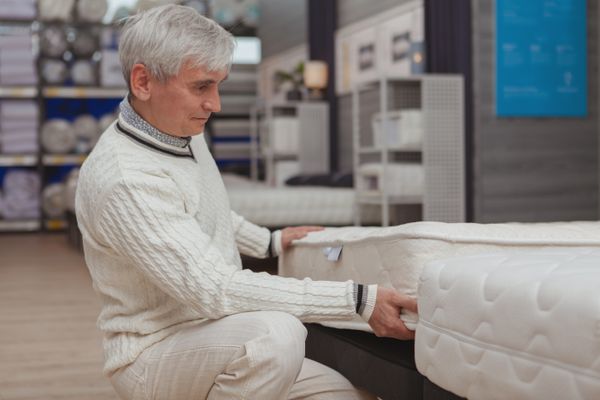
The lifespan of a mattress varies depending on the type, quality, and how well it is maintained. On average, mattresses can last anywhere from 6 to 10 years, but this can vary:
How Long Do Innerspring Mattresses Last?
Typically last about 5-7 years. The springs lose their support over time, leading to sagging.
How Long Do Memory Foam Mattresses Last?
Memory foam mattresses can last around 8-10 years. Higher-density foam tends to last longer than lower-density versions.
How Long Do Latex Mattresses Last?
Both natural and synthetic latex mattresses have a longer lifespan, often lasting 10-15 years due to the durability of latex.
How Long Do Hybrid Mattresses Last?
Combining innerspring and foam, hybrid mattresses usually last about 7-10 years, depending on the quality of the materials.
Factors Affecting Lifespan:
- Usage: The more frequently a mattress is used, the quicker it may wear out.
- Body Weight: Heavier weights may cause a mattress to wear out faster.
- Maintenance: Regular cleaning, rotating or flipping (if applicable), and using a mattress protector can extend a mattress's life.
- Quality of Materials: Higher quality materials generally lead to a longer lifespan.
How Often Should You Replace Your Mattress?
The general recommendation is to replace your mattress approximately every 6 to 8 years, but this can vary based on several factors:
- Type of Mattress: Different types of mattresses have different lifespans. For instance, high-quality memory foam or latex mattresses can last up to 10 years or more, while innerspring mattresses might need replacement sooner.
- Usage: The more a mattress is used, the quicker it may wear out. A mattress in a guest room that’s rarely used will last longer than the one in your master bedroom.
- Body Changes: Changes in your body such as weight fluctuations, aging, or new health conditions might necessitate a new mattress to ensure proper support and comfort.
- Wear and Tear: Signs of wear like sagging, lumps, coils poking through, or noticeable dips are clear indicators that it’s time for a new mattress.
- Sleep Quality: If you’re consistently not sleeping well, waking up stiff and sore, or experiencing increased allergy symptoms, it might be time to replace your mattress.
- Warranty Period: Sometimes the warranty period can give you a good idea of how long the manufacturer expects the mattress to last.
While these guidelines are useful, the best indicator is often your own experience. If you're no longer finding your mattress comfortable or if you're waking up with aches and pains, it might be time to consider a replacement, even if it's been less than 6-8 years. Regularly assessing your mattress and your sleep quality can help you determine the right time to make a change.
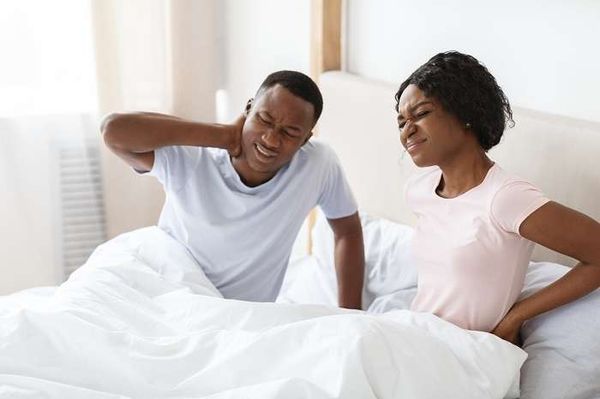
How to Get Rid of a Mattress
Getting rid of a mattress properly is important for environmental considerations and local regulations. Remember to check your local regulations regarding mattress disposal, as improper disposal can result in fines in some areas. Also, consider the environmental impact and opt for recycling or donation whenever possible to reduce landfill waste. Here are several options for disposing of an old mattress:
- Municipal Waste Management: Check with your local waste management services. Some cities offer bulk pickup services for large items like mattresses. There may be specific guidelines or fees involved.
- Mattress Disposal Service: There are companies that specialize in mattress disposal. They will pick up and dispose of your mattress, often ensuring that it is recycled or donated if in good condition.
- Retailer Take-Back: When you buy a new mattress, ask the retailer if they offer a take-back program for your old mattress. Some retailers will remove your old mattress when delivering the new one.
- DIY Disposal: If you have the means to transport the mattress yourself, you can take it directly to a recycling center or landfill. Make sure to check the facility's policies and fees beforehand.
How to Donate a Mattress
If the mattress is still in good condition, consider donating it to a local charity, shelter, or community organization. Check their acceptance criteria as some organizations may not take used mattresses.
Does Goodwill take Mattresses?
Goodwill does not accept mattresses or box springs. This policy is mainly due to sanitary regulations and the difficulty in ensuring that used mattresses are free of bed bugs and other pests.
How to Recycle a Mattress
Recycling a mattress is an environmentally responsible way to dispose of it, as many components of a mattress can be reused or repurposed. Here's how to recycle a mattress:
- Find a Mattress Recycling Center: Start by locating a mattress recycling facility in your area. The Mattress Recycling Council offers resources to find local recycling centers.
- Check Local Waste Management Programs: Some municipalities have specific programs for bulky items like mattresses. Contact your local waste management or recycling center to inquire about mattress recycling options.
- Use Recycling Programs from Retailer: Some mattress retailers offer recycling services for your old mattress when you purchase a new one from them. Inquire about this option when you buy a new mattress.
- Hire a Recycling Pick-up Service: There are services available that will come to your home and pick up your mattress for recycling. Companies like 1-800-GOT-JUNK? and local haul-away services may offer this.
- Consider Non-Profit Organizations: Some non-profit organizations may offer mattress recycling or have partnerships with recycling centers.
- DIY Disassembly and Recycling: If you're unable to find a recycling center, you can consider disassembling the mattress yourself and recycling the parts. Metal springs can be taken to a scrap metal recycler, foam and fibers can sometimes be recycled at local facilities, and the wooden frame can be repurposed or used as firewood.
- Check Mattress Recycling Fees: Be aware that some recycling centers or services may charge a fee for mattress recycling due to the labor involved in breaking down the materials.
Sleep Health Questions
A good night’s rest is pivotal to your overall health and well-being, and your mattress plays a key role in that equation. In this segment, we'll explore a variety of questions and provide insightful answers about how different aspects of mattresses - from firmness to material type - can influence your sleep health.
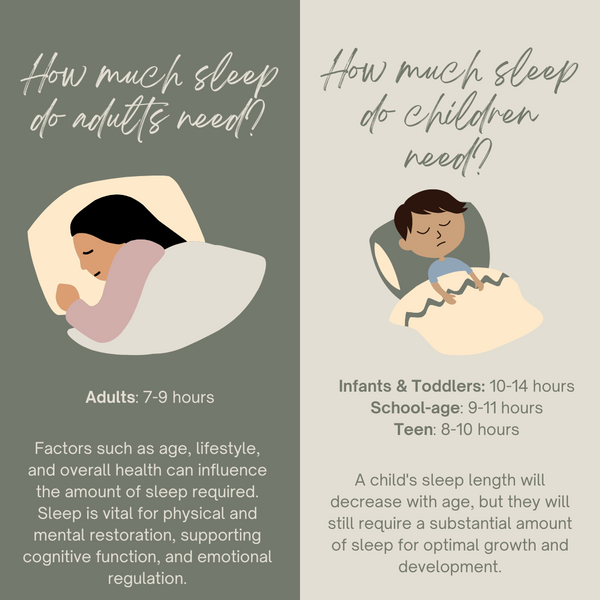
What is the Best Mattress for Back Pain?
Choosing the best mattress for back pain depends on individual preferences and specific back issues, but generally, a medium-firm mattress is often recommended. Historically, doctors have recommended firm mattresses to those suffering from pain in their lower backs. However recent studies have shown that medium-firm mattresses can actually be more effective.
Popular Mattress Firmness for Back Pain:
- Medium-Firm Feel: Research suggests that medium-firm mattresses can be effective in reducing back pain. They offer sufficient support to keep the spine aligned while offering enough cushioning for comfort.
Popular Mattress Types for Back Pain:
- Memory Foam and Latex Mattresses: These materials are known for their pressure-relieving properties and can contour to the body's shape, providing support where it's needed and reducing pressure on the spine.
- Hybrid Mattresses: The coils provide support, while the foam layers add comfort and pressure relief.
What to Consider:
- Zoned Support Systems: Some mattresses are designed with different zones that offer varying levels of support to different parts of the body, which can be beneficial for spinal alignment and back pain relief.
- Adjustable Beds: For some people with back pain, an adjustable bed base that allows them to change their sleeping position can provide relief.
- Consulting with Health Professionals: If you have chronic back pain, it's a good idea to consult with a healthcare provider or a physical therapist for personalized advice.

What is the Best Mattress for Side Sleepers?
For side sleepers, the best mattress is one that contours to the body's curves while maintaining spinal alignment. Here are key considerations for side sleepers when choosing a mattress:
Popular Mattress Firmness for Side Sleepers:
- Medium Firmness: Side sleepers generally benefit from a medium mattress.
- Plush Firmness: Side sleepers often experience pressure points at the hips and shoulders. A medium plush or plush mattress allows these areas to sink in comfortably, reducing pressure and preventing pain or numbness.
Popular Mattress Types for Side Sleepers:
- Memory Foam Mattresses: Materials like gel memory foam or memory foam are excellent for side sleepers as they contour to the body's shape, providing support and cushioning where needed.
- Hybrid Mattresses: They offer the contouring properties of foam with the added support of coils.
What to Consider:
- Zoned Support: For side sleepers, a mattress that's softer around the hips and shoulders but firmer in the middle can provide optimal alignment.
- Pressure Relief: Side sleeping can put pressure on the hips and shoulders, so look for a mattress that excels in pressure relief.
- Spine Alignment: The mattress should support the natural curve of the spine. Too soft, and the body will sink in too much; too firm, and it won’t contour enough, leading to misalignment.
- Pillow Considerations: Pairing a good mattress with the right pillow is crucial for side sleepers. The pillow should fill the gap between the head and the mattress to keep the neck aligned with the spine.
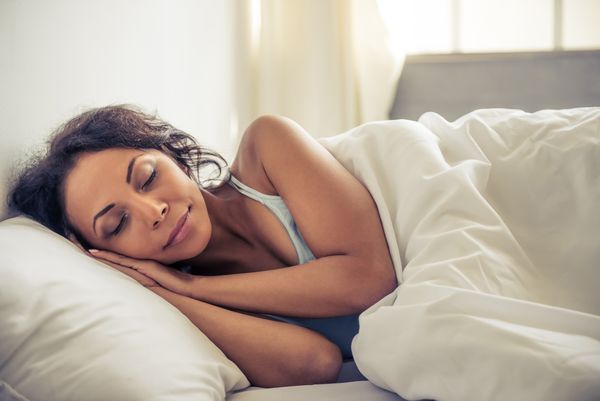
Do Mattresses have Fiberglass?
Yes, some mattresses contain fiberglass, which is often used as a fire retardant. The use of fiberglass in mattresses has become more common as manufacturers seek cost-effective ways to meet flammability standards set by law. When shopping for a new mattress, if you have concerns about fiberglass, look for products that explicitly state they are fiberglass-free or inquire directly with the manufacturer about the materials used in the mattress's construction. Additionally, consider mattresses that use natural fire retardants like wool, which can be a safer alternative.
What Does Fiberglass Look Like on a Mattress?
Fiberglass in mattresses is not usually visible when the mattress is intact and properly covered. It's typically embedded within the inner layers of the mattress as a fire retardant material. However, if the outer cover of the mattress is removed or damaged, you might notice signs of fiberglass:
⇨ Fiberglass looks like small, shiny, and sometimes colorful threads or filaments. These can be very fine and may glisten in light.
⇨ If fiberglass is exposed, it can spread easily and stick to fabrics, surfaces, and skin. It might look like a dusting of glitter or tiny shards of glass on surfaces around the mattress.
⇨ If you suspect fiberglass exposure and you're experiencing skin, eye, or respiratory irritation, it could be a sign that the fiberglass fibers have become airborne.
It's important to remember that fiberglass should not be a concern as long as the mattress's protective cover remains intact and is not removed. Many mattresses have removable covers for washing, but if a mattress contains fiberglass, the law tag or the manufacturer's instructions typically warn against removing the cover.
Buying a New Mattress Questions
Embarking on the journey of buying a new mattress can be filled with questions and uncertainties. At Colder’s, we aim to simplify this process for you. From understanding the different types of mattresses to considering factors like firmness, size, and materials, we'll cover essential questions to guide you in making an informed decision.
How to Choose a Mattress
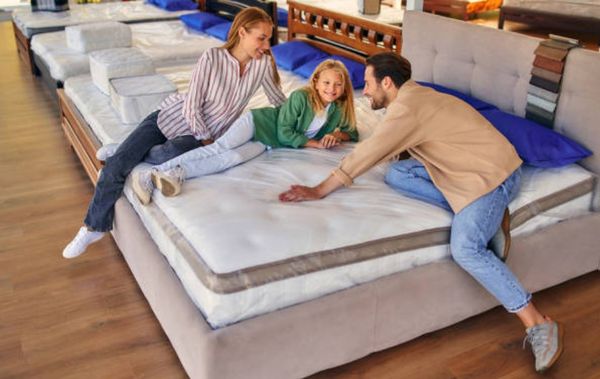
Choosing the right mattress involves considering several factors to ensure you get the best sleep possible. Here's a guide to help you make an informed decision:
- Determine Your Budget: Mattresses can vary significantly in price. Set a realistic budget but remember that a good mattress is an investment in your health and well-being.
- Identify Your Sleep Position: Your preferred sleeping position influences the type of support you need. Side sleepers often benefit from a softer mattress, back sleepers may prefer medium-firm, and stomach sleepers usually need a firmer mattress for proper spinal alignment.
- Check for Support and Comfort: The mattress should support the natural curve of your spine and distribute your body weight evenly. Comfort is subjective, so it’s essential to test different types of mattresses.
- Assess Firmness Level: Firmness is a key factor in comfort and support. It’s not one-size-fits-all and can depend on your body weight and sleep position.
- Test the Mattress: If possible, lie on the mattress for at least 10-15 minutes in your typical sleeping position. This is the best way to gauge comfort and support.
- Read Reviews and Consumer Feedback: Online reviews and consumer ratings can provide valuable insights into a mattress's performance over time.
- Consider Any Health Issues: If you have specific health concerns like back pain, allergies, or sleep apnea, choose a mattress that caters to these needs.
- Look at the Warranty and Sleep Trial: A good warranty and a sleep trial period are signs of a company's confidence in their product. They also provide peace of mind.
- Think About Size: Make sure the mattress fits your room and suits your lifestyle. For example, couples often find a queen or king size more comfortable.
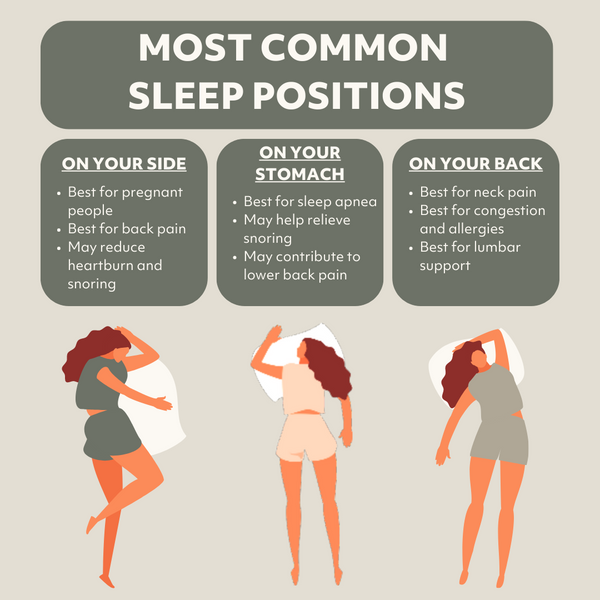
When is the Best Time to Buy a Mattress?
The best time to buy a mattress often coincides with major sales events and holidays when retailers offer significant discounts. Here are some key times to consider:
- Holiday Weekends: Many mattress retailers offer sales during holiday weekends.
- Black Friday and Cyber Monday: These shopping days after Thanksgiving in November are known for substantial discounts on a wide range of products, including mattresses.
- New Year's Sales: Retailers often offer sales in January to clear out last year's inventory. This can be a good time to find a deal.
- End of Winter/Start of Spring: Late February to early April is when new mattress models typically arrive in stores. Retailers may discount older models to make room for new inventory.
- Late Summer/Early Fall: Some manufacturers release new models in September, so August and September can be good months to shop for deals on outgoing models.
- Overstock and Clearance Sales: Keep an eye out for clearance and overstock sales throughout the year, as retailers will reduce prices to clear excess inventory.
Remember, while these times can offer good deals, the best time to buy a new mattress also depends on your personal needs. If your mattress is significantly affecting your sleep quality, it's better not to wait for a sale. Also, always compare prices and read reviews to ensure you're getting a good deal on a quality mattress.
When Do Mattresses Go on Sale?
Mattresses typically go on sale during key times of the year when retailers offer significant discounts. These periods often coincide with major holidays, seasonal changes, and special shopping events. Here's a rundown of when you can expect to find mattress sales:
Mattress discounts and promotions are common during major holiday weekends, such as:
- President's Day Mattress Sale (February)
- Memorial Day Mattress Sale (Late May)
- Fourth of July Mattress Sales
- Labor Day Mattress Sale (Early September)
- Veterans Day Mattress Sale (November)
Mattress Price Questions
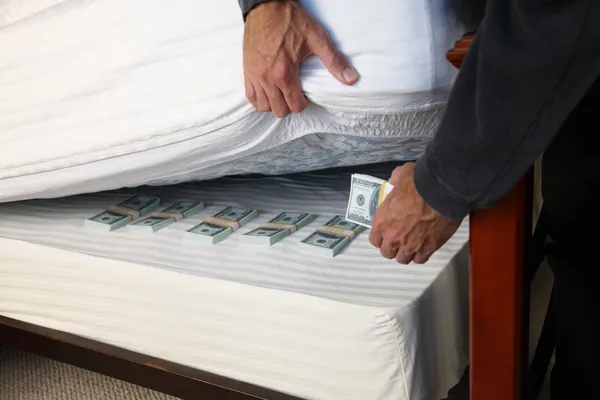
When it comes to purchasing a mattress, one of the most crucial factors to consider is the price. Whether you're curious about what drives the price of a mattress, seeking advice on finding the best value for your budget, or wondering about the long-term investment in a quality mattress, we've got you covered.
What is a Reasonable Price for a Mattress?
The price of a mattress can vary widely based on factors like type, size, brand, and quality. Here's a general idea of what you might expect to pay for a new mattress:
- Budget Mattresses (Under $500): These are typically basic innerspring or lower-density foam mattresses. They can be a good choice for temporary situations or limited use, like in a guest room.
- Mid-Range Mattresses ($500 - $1,500): This price range includes higher-quality innerspring mattresses, memory foam, hybrid, and some latex mattresses. You can expect good durability and comfort.
- Premium Mattresses ($1,500 - $3,000 and up): These mattresses are often made with high-quality materials, such as high-density foams, advanced hybrid constructions, and organic/natural materials. They also offer more features, like enhanced cooling or targeted support.
- Luxury Mattresses ($3,000 - $5,000 and up): At this price point, you're paying for top-tier materials, advanced technology, and often, a luxury brand name. These mattresses can offer superior comfort, support, and longevity.
Why Are Mattresses So Expensive?
Mattresses can be expensive due to several factors that contribute to their cost. Understanding these factors can help explain why investing in a quality mattress often comes with a significant price tag:
- Quality Materials: High-quality mattresses are made with durable materials that provide better support, comfort, and longevity. Materials like high-density memory foam, natural latex, and advanced innerspring systems can be costly to produce.
- Research and Development: A lot of research and development goes into creating mattresses that offer optimal support, comfort, and durability. This includes innovations for better spinal alignment, pressure relief, and temperature regulation.
- Health and Safety Standards: Mattresses must meet certain health and safety standards, including fire safety regulations. Materials and processes that ensure these standards can add to the cost.
- Brand and Marketing: Brand reputation and marketing efforts also play a role in pricing. Well-known brands with established reputations often charge more.
- Special Features: Additional features like cooling technology, hypoallergenic materials, organic fabrics, or customizability can increase the price.
- Longevity and Warranties: Higher-end mattresses often come with longer warranties and are built to last longer, which can justify a higher upfront cost.
While mattresses can be a significant investment, their impact on sleep quality and overall health can make them worth the expense. It's important to balance cost with personal needs and preferences, and to consider a mattress an investment in one's health and well-being. Remember, you spend about a third of your life sleeping, so investing in a good mattress can be a wise decision for your long-term comfort and health.
How Much Does a Mattress Cost?
The cost of a mattress varies widely based on type, size, materials, brand, and additional features. Here are some factors which will affect the price of a mattress:
- Mattress Type: Memory foam and traditional innerspring mattresses are generally more affordable, while latex, hybrid, and advanced specialty mattresses tend to be more expensive.
- Size: Larger sizes (like king and California king) cost more than smaller sizes (like twin or queen).
- Materials: Higher-quality, durable materials (like high-density foams or organic fabrics) raise the price.
- Additional Features: Special features like cooling gels, hypoallergenic materials, or customizations also contribute to a higher price.

How to Buy a Mattress
Buying a mattress can be a significant investment in your health and well-being. Here's a step-by-step guide to help you make an informed decision:
- Assess Your Needs: Evaluate what you need in a mattress based on your sleep habits, body type, and any health considerations like back pain or allergies. Consider your preferred sleeping position, as it influences the ideal firmness level.
- Research Different Types: Familiarize yourself with the different types of mattresses available, such as innerspring, memory foam, latex, and hybrid models. Each type has distinct characteristics in terms of support, comfort, and durability.
- Set a Budget: Determine how much you're willing to spend. Remember, a higher price doesn't always mean better quality, but investing in a good mattress can improve your sleep quality significantly.
- Read Reviews and Consumer Reports: Look for reviews and ratings online to get an idea of the most reliable brands and models. Pay attention to feedback regarding comfort, durability, and customer service.
- Visit Stores to Test Mattresses: If possible, visit a mattress store to test different models. Spend at least 10-15 minutes on each mattress in your usual sleeping position to gauge comfort and support.
- Check for Trial Periods and Return Policies: Many companies offer sleep trials and hassle-free returns. These policies are particularly important if you're buying a mattress online and can't test it beforehand.
- Consider the Warranty: A good warranty can protect your investment. Check what the warranty covers and for how long.
- Think About Size: Decide on the mattress size you need, considering your room space, whether you share your bed, and personal comfort.
- Delivery and Setup: Inquire about delivery options and costs. Some companies offer white glove delivery service, which includes setup and removal of your old mattress.
- Look for Deals: Keep an eye out for sales, especially during major holidays or events like Black Friday, as these can be great opportunities to purchase a quality mattress at a discounted price.
- Factor in Additional Accessories: Remember to account for the cost of any additional accessories you might need, like a bed frame, mattress protector, or new bedding.
Explore In-Stock Mattresses at Colder's
Where Can I Buy a Mattress Near Me?
When searching for "mattresses near Milwaukee," one outstanding option is independent retailers like Colder's. The experience of purchasing a mattress at such a retailer is distinctively different and often more rewarding compared to big-box stores. Here’s why:
Personalized Experience and Expertise: At Colder's, you'll find a team of trusted sales associates who are educated on sleep health and the intricate details of various mattress types. This expertise ensures you receive personalized advice tailored to your unique sleep needs, something that's often lacking in larger, more generic retail environments.
Testing the Mattress: One of the crucial aspects of buying a new mattress is the ability to test it yourself. Independent retailers like Colder's provide an environment where you can comfortably try out different mattresses. This hands-on experience is essential for determining the right comfort, firmness, and support, ensuring your new mattress will contribute positively to your sleep health.
Exclusive Programs and Offers: Colder's stands out with programs like their Doubleback offer on Restonic mattresses. For every dollar you spend on a Restonic mattress, you receive two dollars back to spend on additional furniture or another mattress. This unique program significantly enhances the value of your purchase.
Special Buys, Discounts, and Sales: Colder's frequently offers special buys, discounts, and sales, providing opportunities to purchase high-quality mattresses at more affordable prices. These deals often surpass what you might find in big-box stores, both in terms of value and quality.
Local Retailer Advantages: As a local retailer, Colder's has a vested interest in the community and in ensuring customer satisfaction. This focus often translates into better customer service, more knowledgeable staff, and a commitment to helping you find the perfect mattress for your needs.
Why Colder's Stands Out: What sets Colder's apart from other retailers is their combination of product knowledge, personalized customer service, and exceptional value offers. Whether you’re seeking advice on the best mattress for back pain or looking for the latest in sleep technology, Colder's provides a shopping experience that’s both informative and rewarding.
When you're searching for "mattress stores near Milwaukee," considering a trusted local retailer like Colder's can make all the difference in finding the perfect mattress to enhance your sleep quality and overall well-being.
Why Trust Colder’s?
Since 1942, we at Colder's pride ourselves on offering value, selection, and service. Serving Southeastern Wisconsin with four showrooms that stock quality name-brand furniture, appliances, and mattresses, Colder’s is sure to house exactly what you are looking for. And if you can't find it on our floors, chances are, we can order it for you. As a local, family-owned company, we are always doing our best to provide the highest value at the lowest cost to everyone who walks through our doors.
Colder’s is committed not only to continuously offering can’t-miss sales but also to working with each customer, making sure that you take advantage of every possible markdown — that’s our best price guarantee. Still need help? We offer zero percent appliance and furniture financing for your home needs!
Shop Mattresses at Colder’s
Don’t put off happiness — and shop mattresses online for unbeatable prices at Colder’s. Our friendly experts are always happy to help answer any mattress questions, whether you call us at 414-476-1574 or use our online chat feature. Better yet, stop by one of our Colder’s locations in West Allis, Oak Creek, Delafield, and Grafton, Wisconsin to touch, see, feel, and experience home products that fulfill your dreams. Visit us today!
Learn More: Why Buying a Mattress Online Is a Bad Idea